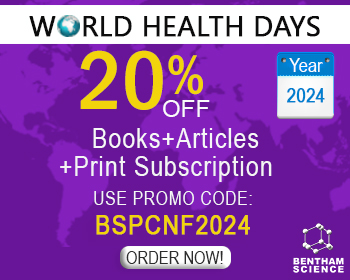Abstract
Glioblastoma (GB) represents the most common and malignant form of glioma cancer. The Gold Standard in Glioblastoma is neurosurgical tumor removal and radiotherapy treatment in concomitant with temozolomide (TMZ). Unfortunately, because of tumor chemo and radio-resistance during this therapy, the patient’s outcome remains very poor, with a median overall survival of about 14.6 months. Resveratrol is a natural polyphenol with a stilbene structure with chemopreventive and anticancer properties. In the present review, we evaluated data from preclinical studies conducted with resveratrol as a possible adjuvant during the standard protocol of GB. Resveratrol can reach the brain parenchyma at sub-micromolar concentrations when administrated through conventional routes. In this way, resveratrol reduces cell invasion and increases the efficacy of radiotherapy (radiosensitizer effects) and temozolomide. The molecular mechanism of the adjuvant action of resveratrol may depend upon the reduction of PI3K/AKT/NF-κB axis and downstream targets O-6-methylguanine-DNA methyltransferase (MGMT) and metalloproteinase-2 (MMP-2). It has been reported that redox signaling plays an important role in the regulation of autophagy. Resveratrol administration by External Carotid Artery (ECA) injection or by Lumbar Puncture (LP) can reach micromolar concentrations in tumor mass where it would inhibit tumor growth by STAT-3 dependent mechanisms. Preclinical evidences indicate a positive effect on the use of resveratrol as an adjuvant in anti-GB therapy. Ameliorated formulations of resveratrol with a favorable plasmatic profile for a better brain distribution and timing sequences during radio and chemotherapy could represent a critical aspect for resveratrol use as an adjuvant for a clinical evaluation.
Keywords: Glioblastoma, Resveratrol, adjuvant of anticancer therapy, preclinical study, anti-invasion, radiosensitizer.
[http://dx.doi.org/10.1038/35052535] [PMID: 11253051]
[http://dx.doi.org/10.1126/science.284.5422.1994] [PMID: 10373119]
[http://dx.doi.org/10.1016/j.ajpath.2012.06.030] [PMID: 22858156]
[http://dx.doi.org/10.1007/s00401-016-1545-1] [PMID: 27157931]
[PMID: 24711712]
[http://dx.doi.org/10.1038/nature07385] [PMID: 18772890]
[http://dx.doi.org/10.1038/nature05236] [PMID: 17051156]
[http://dx.doi.org/10.1016/S0090-3019(99)00103-2] [PMID: 10555843]
[http://dx.doi.org/10.3171/jns.2001.95.2.0190] [PMID: 11780887]
[http://dx.doi.org/10.1016/0360-3016(90)90399-5] [PMID: 2182578]
[http://dx.doi.org/10.1016/j.ijrobp.2005.08.013] [PMID: 16242251]
[http://dx.doi.org/10.3747/co.v17i6.574] [PMID: 21151410]
[http://dx.doi.org/10.1093/jrr/rrs036] [PMID: 22872779]
[http://dx.doi.org/10.1056/NEJMoa065901] [PMID: 17429084]
[http://dx.doi.org/10.1200/JCO.2009.26.6650] [PMID: 20439646]
[http://dx.doi.org/10.5732/cjc.013.10207] [PMID: 24384238]
[PMID: 10914698]
[http://dx.doi.org/10.3109/03639045.2014.958753] [PMID: 25224342]
[http://dx.doi.org/10.1208/s12248-014-9620-9] [PMID: 24961917]
[http://dx.doi.org/10.3389/fphar.2018.01534] [PMID: 30687096]
[http://dx.doi.org/10.1039/C7FO01300K] [PMID: 29044265]
[http://dx.doi.org/10.2174/13816128113199990407] [PMID: 23448440]
[http://dx.doi.org/10.1016/j.lfs.2018.06.028] [PMID: 29959028]
[http://dx.doi.org/10.1016/j.cbi.2019.04.001] [PMID: 30954463]
[http://dx.doi.org/10.1111/j.1742-4658.2012.08617.x] [PMID: 22540632]
[http://dx.doi.org/10.1186/1471-2407-13-147] [PMID: 23522185]
[http://dx.doi.org/10.1158/1535-7163.MCT-04-0056] [PMID: 15827328]
[http://dx.doi.org/10.1186/1471-2407-9-215] [PMID: 19566920]
[http://dx.doi.org/10.1371/journal.pone.0027484] [PMID: 22096581]
[http://dx.doi.org/10.1002/mc.20416] [PMID: 18286483]
[http://dx.doi.org/10.1111/j.1755-5949.2012.00319.x] [PMID: 22530672]
[http://dx.doi.org/10.1016/j.ejphar.2013.09.034] [PMID: 24070814]
[http://dx.doi.org/10.1021/jf104917q] [PMID: 21395220]
[http://dx.doi.org/10.1016/j.biopha.2005.06.001] [PMID: 16084059]
[http://dx.doi.org/10.3390/nu7064383] [PMID: 26043036]
[http://dx.doi.org/10.3892/ol.2015.3888] [PMID: 26870238]
[http://dx.doi.org/10.1158/1078-0432.CCR-03-0105] [PMID: 15041740]
[http://dx.doi.org/10.3171/2016.1.JNS152077] [PMID: 27419830]
[http://dx.doi.org/10.1155/2019/1321973] [PMID: 31119150]
[http://dx.doi.org/10.1016/j.jphs.2015.11.001] [PMID: 26698406]
[http://dx.doi.org/10.1016/j.freeradbiomed.2011.10.487] [PMID: 22094224]
[PMID: 16619530]
[http://dx.doi.org/10.1002/jcp.22806] [PMID: 21503893]
[http://dx.doi.org/10.1007/s13311-014-0334-6] [PMID: 25588581]
[http://dx.doi.org/10.18632/oncotarget.12414] [PMID: 27716625]
[http://dx.doi.org/10.1186/s12885-018-4771-1] [PMID: 30176837]
[http://dx.doi.org/10.1016/S0891-5849(02)00911-5] [PMID: 12126761]
[http://dx.doi.org/10.4049/jimmunol.164.12.6509] [PMID: 10843709]
[PMID: 22426504]
[http://dx.doi.org/10.1385/MN:29:1:61] [PMID: 15034223]
[http://dx.doi.org/10.1158/1940-6207.CAPR-10-0274] [PMID: 21467134]
[http://dx.doi.org/10.1016/j.jconrel.2011.09.083] [PMID: 21978644]
[http://dx.doi.org/10.3390/ijms20061381] [PMID: 30893846]
[http://dx.doi.org/10.1016/j.jbiotec.2019.05.071]



























